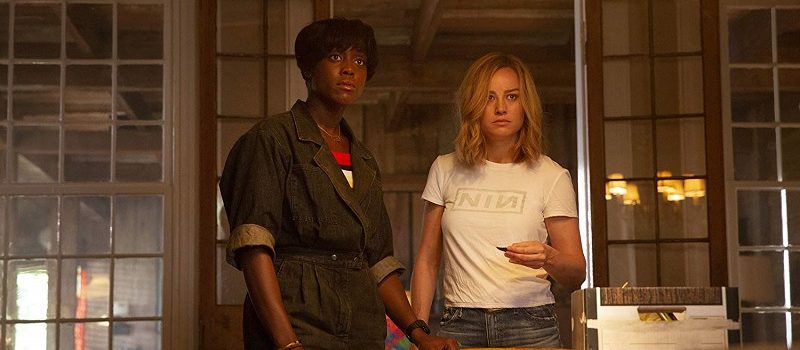Many a director has reported that a large percentage of their job is done with casting. If that is truly the case, Anna Boden and Ryan Fleck were filming on easy street when Brie Larson was tapped to portray the lead in Captain Marvel. Of course, we jest—there is nothing that appears “easy” when it comes to bringing the most powerful force in the Marvel Cinematic Universe to life.
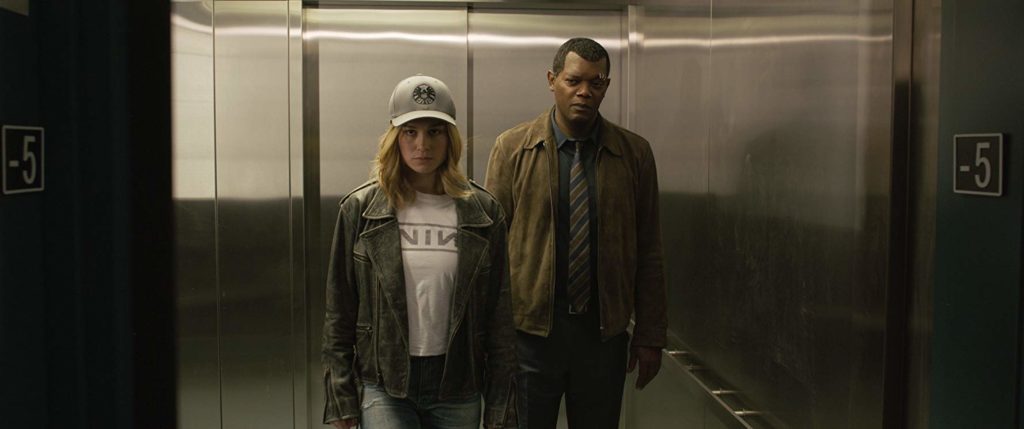
The highly anticipated Marvel Studios film became must-see movie time at the conclusion of Avengers: Infinity War. Samuel L. Jackson’s Nick Fury, prior to becoming dust, sends out a 911-emergency message to … Captain Marvel. After witnessing what she does and can do in her first stand-alone film, Thanos, you are so on notice.
Captain Marvel takes place in the 90s. One would be hard pressed to find a Marvel movie that utilizes its soundtrack more aptly than any in the comic book studio’s decorated history, save Guardians of the Galaxy—which made it integral to its plot. Yes, even this AC/DC fan who cherished what they did in Iron Man 2 has to say hearing Hole’s Celebrity Skin, Elastica’s Connection and Garbage’s signature song, I’m Only Happy When it Rains, while Larson does her thing gave me perma-grin throughout. Then again, that smile could also have arisen from witnessing the Oscar winning actress in a role she was born to play.
At its heart, Captain Marvel is a basic origins story/hero’s journey. What makes it different is how Boden and Fleck’s screenplay weaves a wickedly smart web that leads Carol Danvers (Larson) to discover who she is, who she was and who she could be—but also where all this fits into a cinematic universe that is about as firmly established as can be in modern movie storytelling. That is no easy task.
It is no wonder that producers, such as Marvel Studios head Kevin Feige, only had Oscar winning or nominated actresses on their short list to portray the title character. To say this soul is complicated and multifaceted barely scratches the surface of the hill filmmakers had to climb to bring her to life and give her storied comic book history justice. There are several aspects to her that are blanks that will not be filled in by this review—no spoilers, people! I will say this … through flashbacks and the pierced dramatic portions laid out brilliantly over the film’s running time, Larson must use all the tools in her thespian tool box. It had to be as stimulating of a part for the actress to undertake since she entered the Room.
The crux of our tale revolves around two warring alien races who are on the verge of using Earth as their battleground. Within that dramatic structure is that self-discovery journey of Danvers that is so tactfully thought out by a screenwriting team that includes the film’s helmers, as well as co-writer Geneva Robertson-Dworet (who served as one of the writers of the new Tomb Raider).
There is a supremely high IQ DNA that goes in to every single Marvel Studios effort during the last 10 years. Nothing happens on the page, and thus the screen, in a vacuum. Every single time we get the “first” for a character—whether it a decade ago with Iron Man (Robert Downey Jr.) or the First Avenger Captain America (Chris Evans), their introductory film serves as a love letter to the stacks of comic books (and those who wrote them) that gifted them to the world. As such, screenwriters have a treasure trove of background information, but also plot travails. I believe that is why so many of these origin stories in the Marvel Cinematic Universe are so simultaneously rich and riveting. Captain Marvel is no different. Having esteemed actors and actresses to portray these characters is another spoke in the wheel of awesomeness at Marvel. That calls back to that stack of comic books for these thespians to cull from when filling in the three-dimensions that is an effort of characterization. Usually actors “just” have the screenwriter to ask about backstory, or they simply make it up themselves. What Marvel gives its ensemble with each “new” endeavor could not be more creatively inspiring for those fortunate enough to play in this cinematic sandbox.
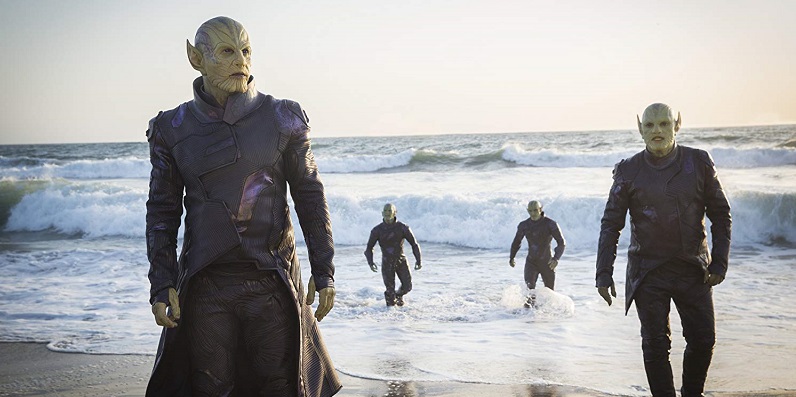
Larson gets the nuances of her character and has a blast in the process. It is true what they say. If the actor is having fun, so too will the audience. Given the utter joy one feels witnessing Captain Marvel, Larson, Jackson and everyone else’s experience making the film must have been beyond blissful. The chemistry between Larson and Jackson, from the moment the two share the screen, is entertainingly explosive. Jackson’s Fury character is at S.H.I.E.L.D., but the group’s full scope has not even been established.
As a longtime Marvel fan, seeing how Fury’s organization was crafted, molded and revved up—thanks to his “running into” Danvers and her alien friends and foes—is sublime . The de-aging process is a technical marvel and deserves one of those scientific Oscars we hear about each year during the Academy broadcast. Never for one second does it seem like we are watching a computer-generated Sam Jackson. It had to be seamless for modern (read: discerning) cinema audiences to accept this premise. Meanwhile, this premise is the key to the entity that is this entire film. It is clear that the man behind the character who orchestrated The Avengers is relishing this opportunity to paint Nick Fury and his landscape with a vastly empty canvas.
Someone else eliciting seismic joy is Ben Mendelsohn (Rogue One, Darkest Hour) as Talos/Keller. He too has major nuance to elicit in his characterization and does so in a manner that feels just about as organic as the art of acting can be. His alien character could have come off as a caricature, but two things occur that catapult Mendelsohn into almost stealing the movie from the star! First, the script’s smartness gave him much to work with and second, what his specific lines state—specifically—allows the actor to craft a vocal tenor and cadence that is perfectly priceless and one to treasure.
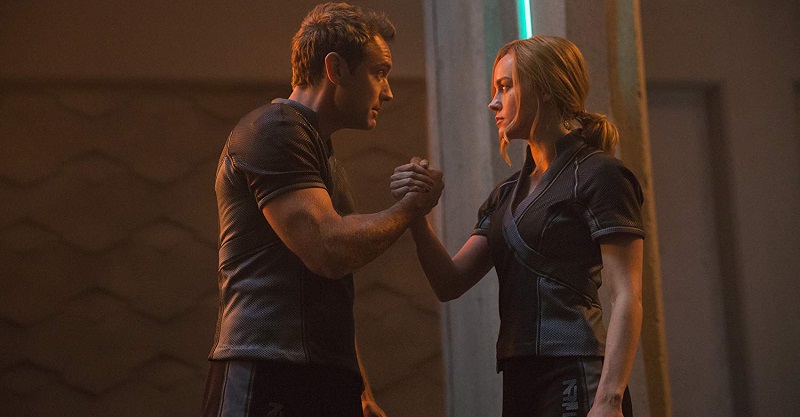
Jude Law has a complicated part to play as well. The actor, I believe, is doing the best work of his career in the last 10 years versus those first roles that made him a star. His Yon-Rogg is one-part mentor to Larson’s character and one part shrouded in a cloud of mystery. It plays perfectly, what with Danvers inability to remember her past. Law lives it to the fullest as his first journey into the comic book movie realm has him threading a pretty narrow needle in characterization that required an actor of his pedigree to make it work and boy, oh boy, does it work.
Two actresses who embody that old sentiment that there are no small parts, only small actors are Annette Bening and Lashana Lynch. The latter is Danvers BFF and fellow Air Force pilot whose role could not be more integral to Danvers success or failure in not only figuring out who she is, but also where her heart lies in terms of what matters most to her. Bening, meanwhile, is ever-present in the far-reaching dual role of Supreme Intelligence and Mar-Vell. The legendary actress clearly revels in her comic book movie moment and brings a cache to the film that is reminiscent of what Robert Redford brought to Captain America: The Winter Soldier.
The true scene-stealer is not human, it is feline and goes by the name of Goose. It is hard to make a cat cool in the movies. Think about it, there are far more canines than felines who have grabbed our hearts and minds over Hollywood history. The kitties of the world have a new torch bearer in the movie world. Here’s hoping Goose is firmly a part of every future Captain Marvel installment heading forward.
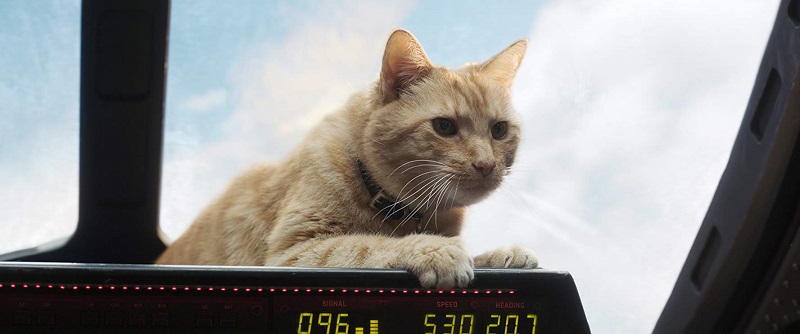
After Avengers: Infinity War, I allowed something to happen. The dark and gloomy notion of Thanos (Josh Brolin) snapping his fingers and achieving his dream of wiping off 50-percent of all life in the universe could not have been rawer. I embraced it. Sure, it would be easy to deny yourself that mourning moment with mental overrides that include thinking, “Spider-Man is coming out with a new movie this summer, there is no way he is really dead” and applying that methodology to every character that fails to exist at the conclusion of the first of the two-part Avengers closing chapter.
To live in that cinema-given reality, one had to wonder how on earth our heroes would manage to rally and find a way to defeat Thanos and maybe even bring back our other halves that got dusted at the close of Infinity War.
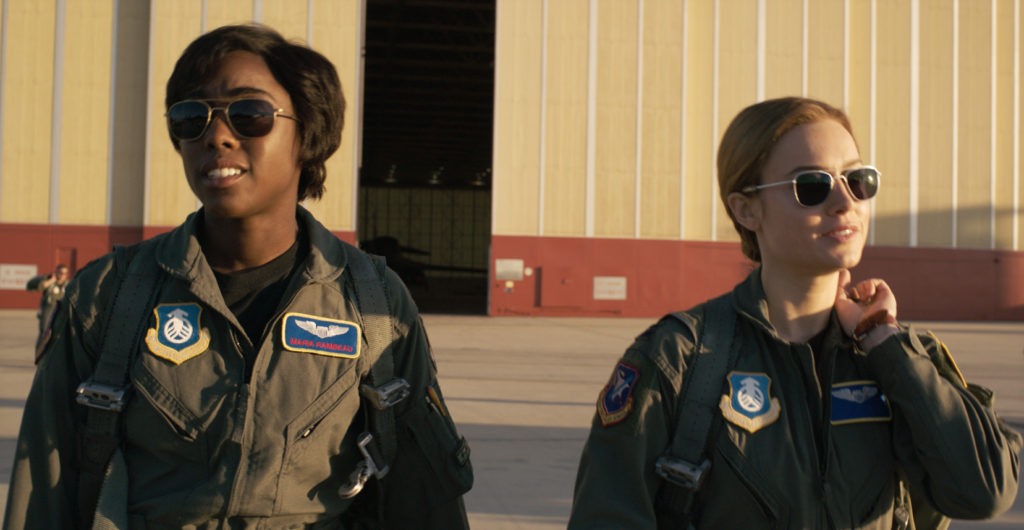
After seeing both post-credits scenes (yes there are two, with the second truly coming at the very end of the credits) and what Captain Marvel can do in her first solo film, I cannot wait to see her not only kick the evil guy’s tail, but to do so in a way that will have audiences leaping out of their chairs in cheer.
Downey Jr. told us in the first press conference for Iron Man that a superhero movie is only as good as its villain. With Thanos, he is right there among the film medium’s best. The second, unspoken, part of that sentiment from Downey Jr. is that when its villain is more powerful than your heroes and they’ve taken a true licking, your revenge and justice movie is only as good as your heroine. With the addition of Captain Marvel to this landscape, heroes do not come so innately commanding as we get with Danvers and her alter-ego.
Grade: A

